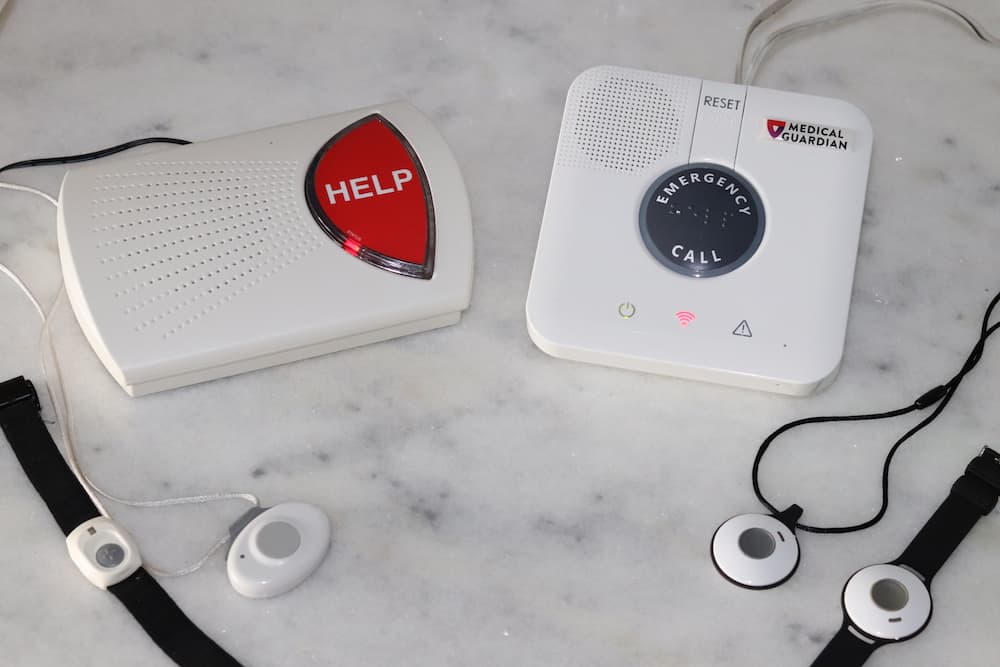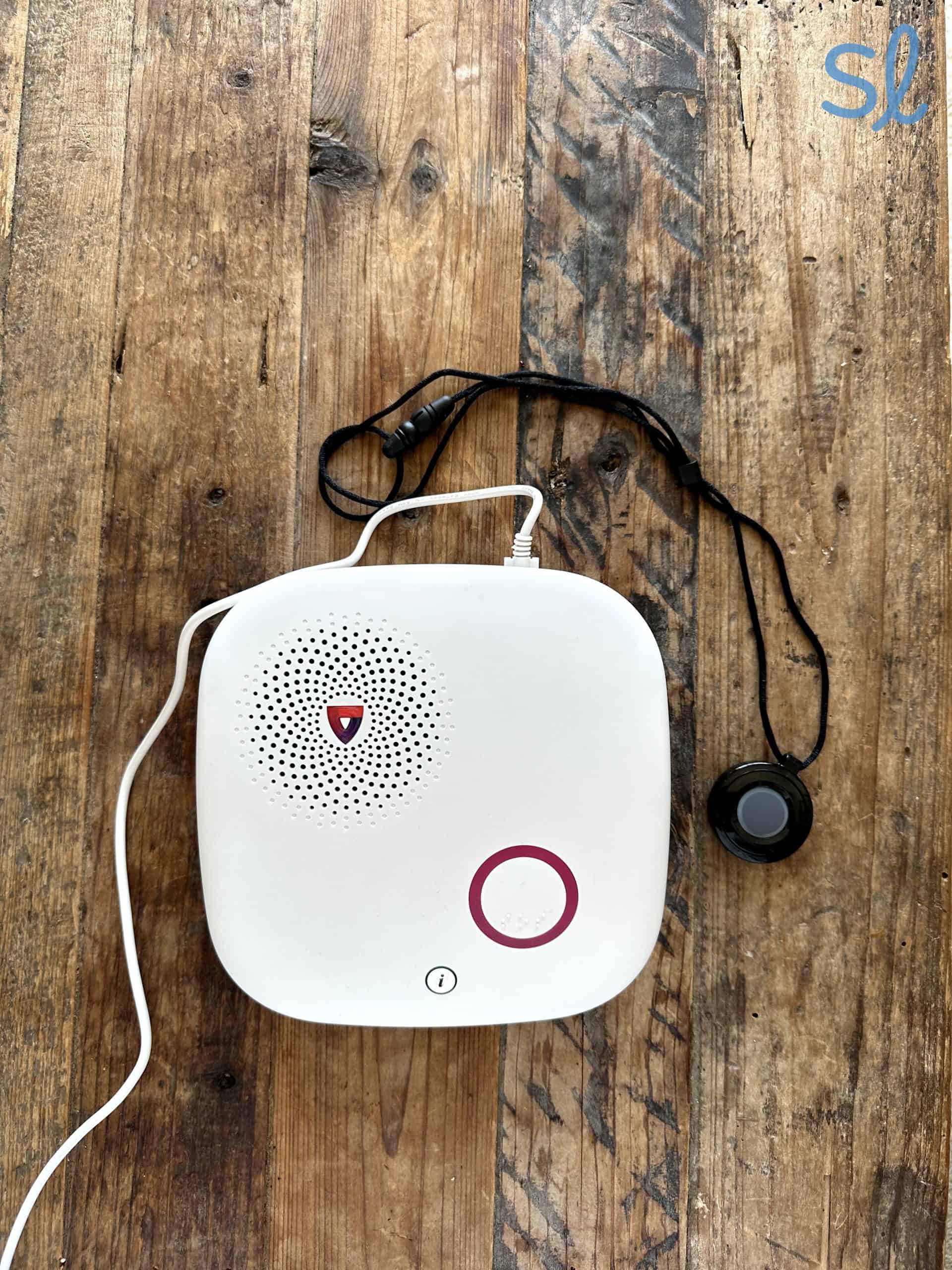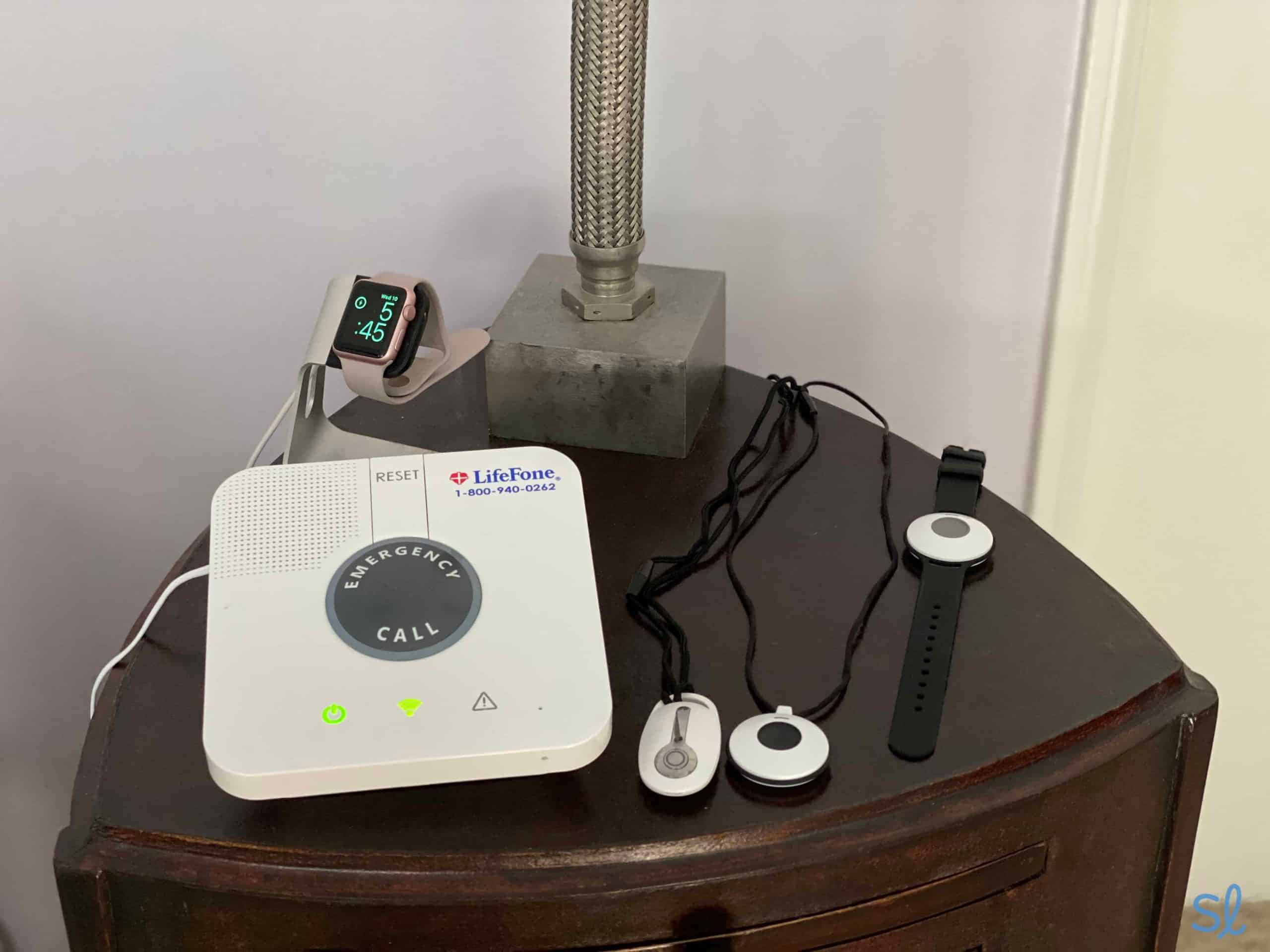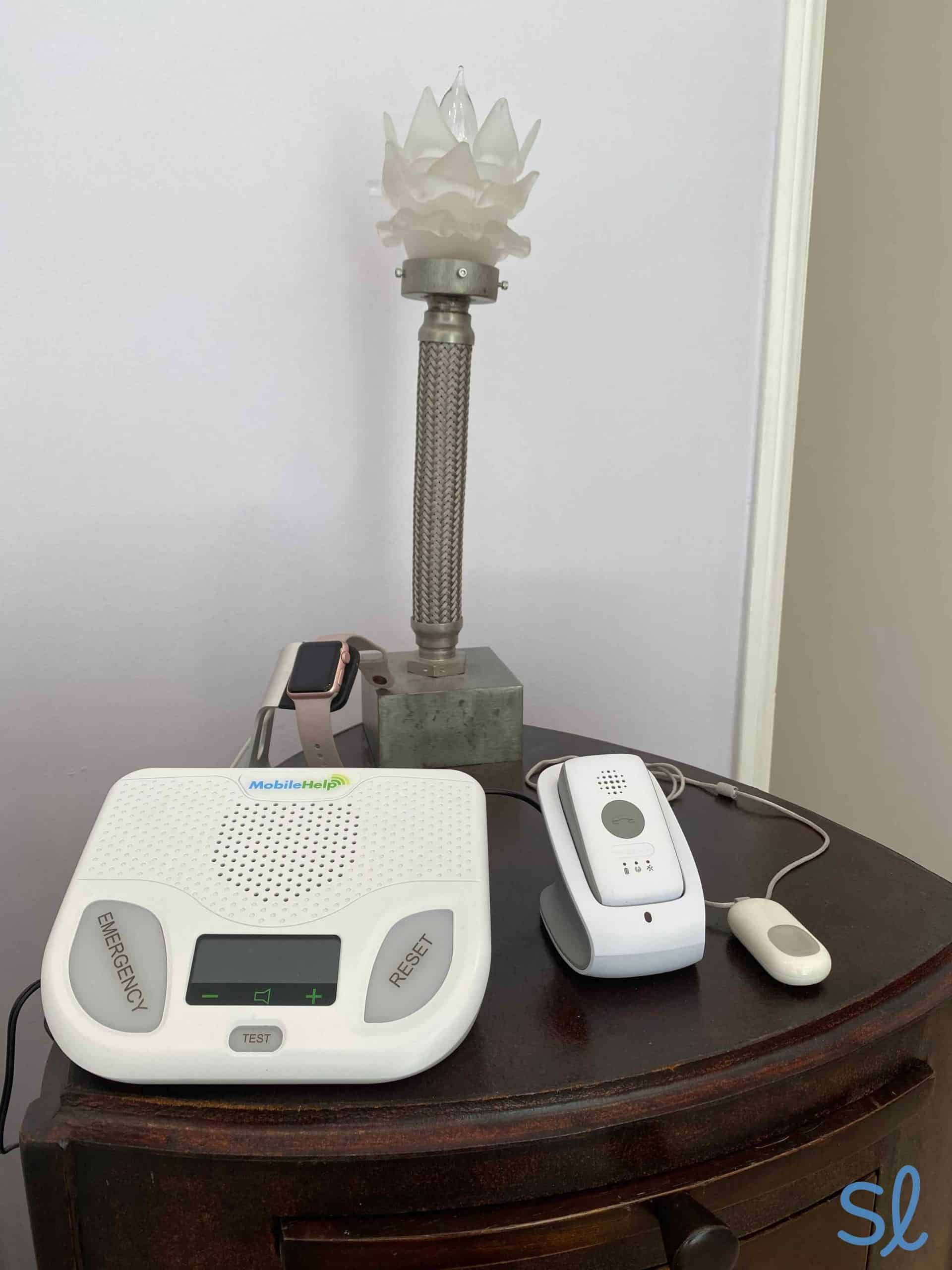How Much Do Medical Alert Systems Cost?
Medical alert system prices vary by system and company, typically costing anywhere from $20 to $60 per month in 2025.
SeniorLiving.org is supported by commissions from providers listed on our site. Read our Editorial Guidelines
When looking for a medical alert system, one of the first things people think about is the cost. With so many systems out there, it's a no-brainer that costs will vary from one brand to another. The good news is, with enough research, you can find a system within your budget that accommodates your lifestyle. It’s important to shop around and ensure that the system you choose is not only affordable but will help you be prepared in a medical emergency.
Choosing the Best Medical Alert System for Your Budget
Picking out a medical alert system is an important decision. Medical alert devices can make a major difference during a medical emergency or potentially life-threatening situation, so you should research the best options in your price range and invest in a quality product. Check out some of the best systems we’ve reviewed and compare prices so you can find the right system for your needs and budget.
How Much Do Medical Alert Systems Cost?
In general, medical alert systems range from $20 to $60 per month. There are some systems with more advanced features, such as a smartwatch system or an in-home system with motion sensors and activity tracking, that cost more; however, there are plenty of excellent options in the $20 to $40 price range for those on a tighter budget.
The cost of medical alert systems primarily depends on the type of system you choose and the features you want. Home-based systems typically cost $20 to $40 per month, while mobile systems are around $10 to $30 higher per month due to accompanying mobile services like GPS tracking and cellular coverage. There are also optional features, including automatic fall detection and wall-mounted help buttons, that can add an extra $5 to $15 per month to your plan.
Along with monthly monitoring fees and add-ons, you’ll need to consider equipment costs. Some providers we've reviewed, such as Aloe Care Health, require you to purchase the equipment outright for a few hundred dollars. On the other hand, Medical Guardian's prices and Bay Alarm Medical's monthly rates include equipment rentals, and you can return your equipment at any time.

Bay Alarm Medical and Medical Guardian in-home systems
Fees to Look Out For When Shopping for a Medical Alert System
In addition to the one-time fee for the medical alert system, there are other costs to bear in mind, including installation, accessories, monthly service fees, upgrades, repairs and replacement, and cancellation fees. Not all companies will impose these fees, but it is good to keep them on your radar when shopping so that you don’t end up with surprise expenses further down the line.
Installation
The installation process will differ depending on the brand and system you choose. Some systems' installation may be as easy as unpacking the box, plugging it in, and working right away — while others may require extra steps to get them working properly. If you or your family member is not tech savvy, then it may be worthwhile to pay a professional to take care of the installation. It may add an extra $100 to $200 to the overall cost of the medical alert system but will provide peace of mind that you won't end up voiding the warranty or creating complications from the get-go after buying the device.

Testing out Medical Guardian's MGHome Cellular system
Some brands offer installation as a recommended add-on service, while others require it with no exceptions. This is a cost to keep in mind when shopping for a medical alert system. If you are tech-savvy and confident that you can figure out the set-up on your own, then you will want to purchase from a company that does not require the installation to be done by them at an additional cost. This will help you save some money and also allow you to become well-acquainted with the device if you know what you're doing.
Accessories
When you first purchase a medical alert system, the chances are your first month's bill will be higher than the following months. The higher cost factors in add-ons and extras will make your device more suitable for your lifestyle and needs and will differ greatly depending on what you get. You can think of this extra cost as a startup cost. Some companies may offer some extras for free, so it is smart to ask around and see how much you can save by opting for a brand that provides accessories at the original price.

LifeFone At Home Landline or Cellular Equipment
Monthly Service
You will be responsible for paying a monthly service fee to keep your system up and running. Conceptually, this is similar to your monthly phone bill. What you pay will depend on the type of service you choose. For example, if you are looking at the most basic plan, you can expect to pay about $20 per month. On the contrary, if you plan to go for a more advanced plan, then your starting cost may be closer to the $40 to $60 per month range.
Unlike the installation and accessories fees which are one-time payments, monthly service fees do not change and are paid regularly. So, it is crucial to take a look at your current budget to determine how much you can actually comfortably spend monthly on keeping your medical alert system running. This should help you narrow down your choices while shopping.
Ask your chosen company what their base monthly cost includes. Some may only provide the bare essentials like the landline service and a pendant/wristband, while others may have more enticing extras like medication reminders, fall detection, a lockbox, etc. Factoring this in with the monthly fee may help you get a device with the best value for your needs.
Upgrades
Every company has different upgrades, but the popular ones you can expect are fall detection, additional pendants, the ability to add on another user, more dedicated support, etc. The list is endless.
Once you make a decision on a comfortable monthly service budget, you can add on extra features that you may need, while still staying within your budget. Depending on the features you opt for, you may pay an extra $5 a month or up to $20 a month. The more features you add, the more you will have to pay. It may be tempting to add on a bunch of features especially if someone is trying to sell you on it, but at the end of the day, it's best to choose only the functions you need to avoid a hefty monthly bill.
Repairs and Replacements
One thing that is often overlooked when people shop for a medical alert bracelet is the potential cost they may be responsible for when a repair or replacement is needed. Of course, if you're lucky, that's further down the line — but still worth keeping in mind. More often than not, we assume that when we buy new things, they should last a long time. But the reality is that repairs and replacements may be necessary at any time.
Some brands offer stellar warranties, while others may nickel-and-dime for repairs and replacements. Alternatively, some may offer a product protection cost that you pay monthly to stay “covered.” The fee can range from $5 to $20 per month. This extra cost adds up fast, so it's best to find a company that has a warranty in place offering at least a free first-time repair or replacement within a reasonable amount of time.
If you ever have to pay out-of-pocket for repairs or full replacements, it could cost you from $20 to $150 depending on the kind of repairs needed, shipping fees, and the cost of the unit (if it's a replacement). Since it's hard to predict fees associated with repairs and replacements, it's wise to set aside a certain amount each month in case your medical alert system decides to break down. This way, you'll be able to quickly repair it or get it replaced without having to worry about coming up with the funds required to do so.
Cancellation
To stay competitive, most brands don’t require customers to sign contracts and penalize users for canceling their plans. However, don’t assume that every company on your shopping list will allow you to walk away at any time with no obligations.
Similar to rent or a gym membership, some brands may require you to give a notice (often 30 days) to avoid a cancellation fee. Others may not charge a cancellation fee but may impose a restocking fee for the products you return when you cancel the service. The restocking fee may be around $50 for them to get your base and pendants together and placed back on the shelf for someone else to use when they sign up.
Last but not least, some companies require users to pre-pay for the system upfront for a certain length of time. This can be pricey if, for example, you pay a year in advance, but decide mid-way or earlier that the medical alert system isn't right for you. On the other hand though, if you stick with the device for the amount prepaid without canceling, you'll likely get a better deal.
Depending on the company, there may be exceptions to cancellation fees. For example, a company may let you out of the contract early if you prove that you have entered a nursing home or an alternative care facility. However, in most cases, they will try to keep your money. With that said, it’s best to keep these fees in mind ahead of time while shopping around, rather than find yourself stuck with the dreaded cancellation fee later on.
Is a Medical Alert System Tax Deductible?
The answer to this question is a bit tricky. Medical alert systems are not on the IRS list of deductible medical expenses, but some related expenses might qualify, such as:
- Specialized equipment installed in your home for necessary medical care
- Equipment prescribed by your doctor related to a medical condition, disability, or chronic illness
- Medical information plans — expenses paid for medical data storage and transmission to a third party like your doctor
You can only deduct the portion of these costs that exceed seven and a half percent of your adjusted gross income. Keep records of all medical alert system-related costs, and speak to a qualified tax accountant to see what you might be able to deduct.
Top Medical Alert Systems Comparisons
Now that we have gotten the fees associated with medical alert systems out of the way, let’s take a look at some of the costs involved for the best medical alert systems that have been shortlisted for their reliability and quality. In the below tables, you can compare not only pricing, but the monitoring services, equipment features, and options offered with the price.

MobileHelp Systems
Pricing and Terms for In-Home Medical Alert Systems
| Bay Alarm Medical | MobileHelp | LifeStation | Medical Guardian | LifeFone | Lifeline | Life Alert | |
|---|---|---|---|---|---|---|---|
| Monthly Cost | From $19.95 | From $19.95 | From $19.95 | From $32.95 | From $29.95 | From $29.95 | From $49.95 |
| Quarterly Discounted Cost | N/A | $32.95/month | N/A | N/A | $27.95/month | N/A | N/A |
| Yearly Discounted Cost | N/A | $29.95/month | $32.95/month | $30.20/month (1 free month) | $24.95/month | $27.95 | N/A |
| Startup Fees | N/A | $49.95 to get $19.95/month plan, otherwise free | N/A | N/A | N/A | $99.95, sometimes waived | Up to $197 |
| Long-Term Contract | N/A | N/A | N/A | N/A | N/A | N/A | 3 years |
Pricing and Terms for Mobile Medical Alert Systems With GPS
| Bay Alarm Medical | MobileHelp | LifeStation | Medical Guardian | LifeFone | Lifeline | Life Alert | Lively | |
|---|---|---|---|---|---|---|---|---|
| Monthly Cost | From $29.95 | From $39.95 | From $39.95 | From $39.95 | From $43.95 | From $44.95 | From $69.95 | From $24.99 |
| Cellular Network Provider | AT&T | AT&T | AT&T | AT&T | AT&T or Verizon Wireless | AT&T | AT&T | Verizon Wireless |
| Startup Fees | N/A | N/A | $99.95 activation fee | N/A | N/A | $99.95 device fee | Up to $197 | $79.99 device fee + $35 activation fee |
| Long-Term Contract | N/A | N/A | N/A | N/A | N/A | N/A | 3 years | N/A |
Features to Consider in a Medical Alert System
| Bay Alarm Medical | MobileHelp | LifeStation | Medical Guardian | LifeFone | Lifeline | Life Alert | Lively | |
|---|---|---|---|---|---|---|---|---|
| 24/7 Monitoring | Yes | Yes | Yes | Yes | Yes | Yes | Yes | Yes |
| In-House or Outsourced Monitoring | Outsourced, U.S.-based | Outsourced, U.S.-based | In-house, U.S.-based | Outsourced, U.S.-based | In-house & outsourced, U.S.-based | In-house, U.S.-based | In-house, U.S.-based | In-house, U.S.-based |
| Base Unit With Sensitive Microphone | Yes | Yes | Yes | Yes | Yes | Yes | Yes | N/A (no in-home base unit system) |
| Water-Resistant Button | Yes | Yes | Yes | Yes | Yes | Yes | Yes | N/A |
| Neck Pendant & Wristband Option | Yes | Yes | Yes | Yes | Yes | Yes | Yes | N/A |
| Wireless Range | 1,000 ft | 600 ft | 1,000 ft | 1,300 ft | 1,300 ft | 800 ft | 800 ft | N/A |
| Auto Fall Detection Alert | Yes | Yes | Yes | Yes | Yes | Yes | No | Yes |
| Carbon Monoxide Monitoring | No | No | No | No | Yes | No | Yes | No |
| Fire & Smoke Monitoring | No | No | No | No | Yes | No | Yes | No |
| Wall-Mounted Button | Yes | Yes | Yes | Yes | Yes | No | Yes | No |
| Key Lockbox | Yes | Yes | Yes | Yes | Yes | Yes | No | No |
| Button Battery Life | 5 years | 5 years | 4 years | 3-5 years | 3-4 years | 5 years | 7 years | N/A |
| Mobile Medical Alert | Yes | Yes | Yes | Yes | Yes | Yes | Yes | Yes |
| Traditional Landline | Yes | No | Yes | Yes | Yes | Yes | Yes | N/A |
| Cellular Mobile Connection | Yes | Yes | Yes | Yes | Yes | Yes | Yes | Yes, with mobile GPS device |
| Voice Over Internet | Yes | No | Yes | Yes | Yes | Yes | Yes | N/A |
>> Compare: LifeStation vs. Medical Guardian
Summary
Budgeting is essential when shopping for a medical alert system. The last thing you want is to stress over how you are going to afford recurring monthly payments in order to stay protected in a medical emergency. If you are careful with choosing only the services and add-ons you absolutely need, you will be able to get the most out of your device while staying within budget. Additional costs and even one-time fees can add up quickly, so they should all be considered before purchasing a medical alert system. To compare prices for popular providers, visit our list of the best medical alert systems.



